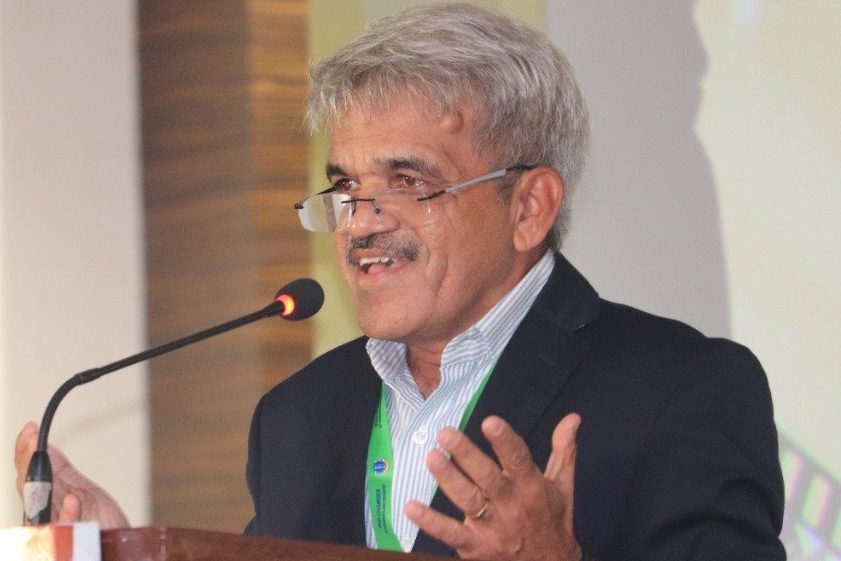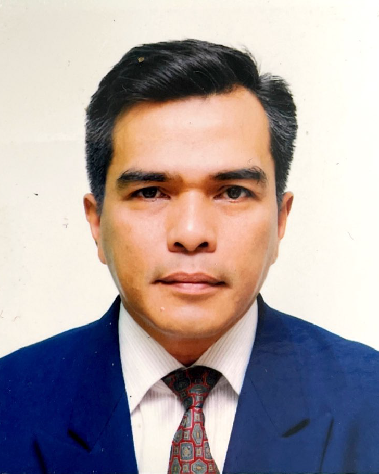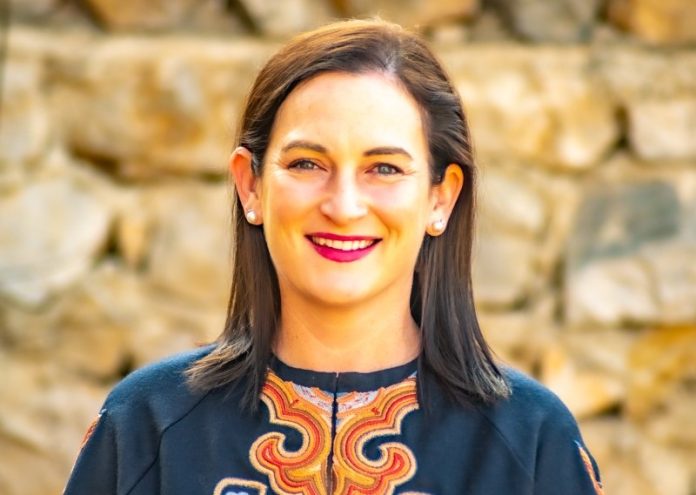- “Indian travellers are in top 3 among these countries, but the number of travellers to India from other ASEAN countries are not encouraging” – Rajan Sehgal
- “India has consistently been a cornerstone of our tourism landscape, Singapore saw an impressive 1.07 million visitor arrivals from India in 2023.” – Markus Tan
- “We have not seen much from the ASEAN region and believe cultural exchange events play crucial role in destination promotion” – Srijana Nepali
- “Bhutan possesses a rich Buddhist heritage that holds significant appeal to travelers from the ASEAN region, which can be further promoted to attract tourists from ASEAN countries” – Carissa Nimah
South Asia and ASEAN regions are actively promoting tourism by leveraging mutual agreements and collaborative marketing efforts, including joint tourism forums and cross-regional promotional campaigns to enhance visibility and attract tourists to both regions.On one hand, initiatives like the ASEAN Tourism Forum (ATF) are specifically designed to promote ASEAN as a unified tourist destination.
On the other side, according to UN Tourism records, South Asia demonstrates remarkable resilience by recovering 87% of 2019 tourism levels as of January this year, highlighting the region’s robust rebound.
Talking about India in particular, India accelerates its position as 39th in the World Economic Forum’s Travel & Tourism Development Index (TTDI) for 2024, emerging as the top performer in South Asia and among lower-middle-income economies. The World Economic Forum (WEF) also highlights that India boasts the largest travel and tourism (T&T) sector in South Asia.
But, the question is, what is the actual current state of tourism flow between these two regions and also India. This study delves into analysing the existence of a comprehensive approach to enhance bilateral tourism between two regions, identification of key barriers, the way forward, as well as retrospect the trends in inter-regional tourism involving both the sides of ASEAN and South-Asia region. Aligned with India’s look east and neighbourhood policies, the story will explore how can there be greater tourism interdependence between India and, ASEAN and South Asia regions.
Analysing Tourist Traffic Growth from ASEAN region to India
Post pandemic as the ASEAN region opens its tourism sector gradually, India visibly establishes itself as a powerhouse tourism source market for the region. Conversely, ASEAN, with a 650 million plus population, itself also is a strong tourism source market.
On analysing the report published by The Eleventh Meeting of ASEAN-INDIA Tourism Ministers held on 25 January 2024, T3 finds out that the number of Indian tourists stood approximately 3,667,620 to ASEAN countries from January to November 2023; whereas India received 651,920 visitors from the ASEAN Member States in 2023. Later a preliminary data based on ASEAN-India comprehensive strategic partnership was released on June 2024, revealing that the number of visitor arrivals from India to ASEAN in 2023 was recorded 4.29 million, an increase from 2.39 million in 2022.
To further increase two-way tourist visits and promoting greater people-to-people exchanges, ASEAN and India implemented ASEAN-India Tourism Cooperation Year in 2019. Also, at the 20th ASEAN-India Summit in Jakarta on 7 September 2023, Prime Minister Narendra Modi conducted in-depth discussions with ASEAN partners to enhance the ASEAN-India Comprehensive Strategic Partnership and map out its future direction.
But despite of the initiatives like ASEAN-India MoU signed in 2012, the ASEAN-India Tourism Ministers Meeting, the ASEAN Tourism Strategic Plan, amongst others, the growth of tourists flowing from ASEAN to India appears substantially less, as observed from the reports above.
When asked Rajan Sehgal, Co-Chair – Tourism & Hospitality Committee, PHDCCI, about the ground reality, he mentions “As far as travel between India & ASEAN is concerned, countries are doing well after pandemic. Especially traffic from India to ASEAN countries like Indonesia, Malaysia, Thailand & Vietnam has gone up.” According to him, Indian travellers are in top 3 among these countries, but the number of travellers to India from other ASEAN countries are not encouraging.

When further questioned on the effectiveness of the mutual agreements, Sehgal adds, “Yes there are agreements and MOU signed between India & ASEAN countries but the same are not result oriented as far as India is concerned. Total population of ASEAN countries as per now is approximately 647 million and share that India is getting, is very less. We can see the example of Vietnam & Indonesia as the number of tourists they are getting after pandemic is a true example of their positive and result oriented planning.”
He further adds, “Jan – Nov 2023 approx 36,67,620 Indians visited ASEAN countries and India got around 6.50 lakhs visitors from ASEAN countries in 2023. India being the leader should take the lead and make its marketing, promotional activities and policies more tourism friendly.”
India’s role in fuelling tourism to ASEAN member countries
Ahmad Johanif Mohd Ali, Director, Tourism Malaysia, New Delhi shares with T3, “South Asia, particularly India, plays a crucial role in driving tourism to the ASEAN region due to its large population base, diverse cultural heritage, and increasing disposable incomes. India’s specific contribution lies in its outbound tourism market, with a growing number of travellers exploring ASEAN countries for leisure, business, and cultural exchanges.”

Talking about the existing agreements and initiatives, Johanif shares that the same have yielded positive outcomes in terms of increased tourist arrivals and cultural exchange. Initiatives such as joint marketing campaigns, travel packages, and strategic partnerships have contributed to raising awareness about destinations in both regions.
To enhance tourism and improve market share further, Johanif suggests strategic recommendations like strengthening air connectivity, enhancing digital marketing efforts targeting specific traveller segments, and fostering more collaborations between tourism boards, airlines, and travel agents. Additionally, focusing on sustainable tourism practices and offering tailored experiences that resonate with Indian travellers’ preferences can help capture a larger share of the market.

Sharing insights, Markus Tan, Regional Director for India, Middle East, South Asia, and Africa (IMESA), Singapore Tourism Board mentions to T3 that Singapore and India share a dynamic and thriving tourism partnership. “India has consistently been a cornerstone of our tourism landscape, we saw an impressive 1.07 million visitor arrivals from India in 2023, representing a remarkable 76% recovery compared to pre-COVID levels. This resurgence outpaces our global recovery rate and solidifies India as our fifth-largest source market”, explains Tan.
He further expresses, “Tourism flows from India to Singapore have remained robust through 2024, with more than 6,29,000 visitor arrivals from January to June alone. Additionally, India stands as our second-largest cruise source market, with over 101,000 Indian visitors choosing to embark on cruises from Singapore in 2023.”
Analysing Traffic from ASEAN region to other South Asia countries

To find out tourism flow from ASEAN, T3 talks to Srijana Nepali, Officer, Tourism Marketing and Promotion Department, Nepal Tourism Board and finds out that the ASEAN region is one of the potential tourism source markets for Nepal in terms of Buddhist destination. According to Nepali, NTB has always worked on the promotional activities and collaborations in this region through different destination promotion, joint promotion, sales mission and fairs to showcase Nepal with utmost prominence in this region.
Recently, NTB in close coordination with Embassy of Nepal organized Nepal Tourism Promotion Event: Lumbini to Himalayan Bliss in Thailand in June end. “Such programs provide a wider platform for the two countries to unleash the potentials of tourism promotion and explore the vast tourism offerings of Nepal in new avenues. However, we have not seen much from the ASEAN region and believe cultural exchange events play crucial role in destination promotion”, expresses Nepali.
Sharing insights on behalf of Bhutan, Carissa Nimah- Chief Marketing Officer at Department of Tourism – Bhutan reveals that from January to May 2024, Bhutan received a total of 64,941 tourists, with significant contributions from various nationalities. She adds, “While Indian tourists constituted the largest source market, ASEAN countries represented some of our other largest source markets, including Singapore, Malaysia, Vietnam, and Thailand.”

She further mentions, “The fact that ASEAN countries make up some of the largest source markets for Bhutan prove that Bhutan’s marketing efforts are having some impact.” Bhutan has implemented a comprehensive array of marketing strategies to promote itself as a premier tourist destination, including targeted efforts to attract visitors from ASEAN countries.
“Our main marketing efforts include a strong focus on PR, promotion of festivals and events, social media, digital marketing campaigns, brand campaigns, roadshows and events, content creation, partnerships, travel consortia memberships, webinars and other activities with B2B partners, as well as FAM and press trips”, Nimah shares.
Factors hindering tourist flow between ASEAN & South-Asia; The way ahead
Unlike the ASEAN member countries ranking top in the region for tourism, which have adopted various promotional measures to penetrate into the South-Asia or India market, India is seen taking a different approach for its tourism sector. In the Interim Budget 2024, Finance Minister Nirmala Sitharaman allocated INR 3 crore for promoting India overseas, a figure that remains unchanged in the Union Budget 2024, marking a drastic and steep reduction compared to previous years. Furthermore, the reduction of overseas offices from 20 to 8 has exacerbated the issue, limiting India’s visibility as a global tourist destination.
Highlighting the challenges, Sehgal adds, “Our marketing and awareness campaigns are not upto the mark. Other countries mentioned above are leaders in taking positive initiatives. Our initiatives are slow, cost of flights within India, hotel rates, taxes are very high compared to other countries. As our domestic tourism picked up after pandemic our overseas tourism promotions gone down.”
Sehgal further expresses that even after doing G20 Summit in grand way, the response was not upto the mark. The roadshows and promotional activities are not close what the countries like Thailand, Vietnam, Malaysia are doing. During & after pandemic, Maldives got maximum number of Indian travellers, says Sehgal. He further comments that India is the only country which can offer rich culture, heritage, festivals, cuisine, monuments, medical facilities. India is a 365-days tourism destination, and the approach should be result-oriented with the ability of making fast decisions.
Indians are going to these countries for weddings, honeymoon, film shoots because of their friendly policies and India must have a similar aim, expresses Sehgal. “This is the right time if we want take advantage of this industry as it generates maximum employment and foreign exchange for the country”, Sehgal concludes.
Johanif reveals challenges between the regions addressing visa complexities, inconsistent air connectivity, perceived safety concerns, and limited awareness about lesser-known destinations. Addressing these barriers requires streamlined visa processes, enhanced transportation links, safety assurances through effective communication, and targeted promotional campaigns showcasing the region’s diverse offerings. Positive perceptions about safety, cultural richness, and hospitality further bolster destination choices, according to Johanif.
“Strategic alignment of these factors can effectively shape traveller perceptions and drive visitor arrivals, enhancing the overall tourism potential between India and ASEAN countries”, shares Johanif. “Collaborative efforts among governments, tourism boards, and private sector are crucial to overcoming these challenges and fostering sustainable tourism growth”
Talking about the challenges, Nimah highlights factors like limited direct flights, inconvenient travel routes, and perceived high cost. “There are limited direct flight options connecting ASEAN countries to Bhutan. Travelers often need to transit through major hubs such as Bangkok or Delhi, adding travel time and complexity.” Besides the lack of direct flights results in longer travel durations and multiple layovers, can deter tourists seeking convenient and time-efficient travel options, she mentions.
She also adds that “Bhutan’s Sustainable Development Fee (SDF), visa fees, and comparatively high travel costs, can give the perception that Bhutan is an expensive destination to visit. However, the reality is that once you’re in Bhutan, there are a range of accommodation and dining options to suit every budget. Experiences, guides, drivers and meals, are all very affordable in Bhutan.”
Barriers that hinder Bhutanese travel to other ASEAN countries, according to Nimah, mostly include economic constraints. However, many ASEAN countries are extremely popular destinations for Bhutanese travellers for both work and personal reasons.
When asked about challenges, Nepali adds that first and foremost, less flight frequency to this region is one of the main challenges. Similarly, language barrier, payment gateway are also other major challenges. “Full-fledged operation of Gautam Buddha International Airport, state of the infrastructure development and strategic showcasing of Nepal as a destination for this region is still minimum”, shares Nepali.
She further opines, “The outbound trend from this region is also not so significant. Visa issues, documentation hassle are also to be improved. Lumbini is also not adequately tapped along with other possible activities. Proper promotion of other Buddhist religious sights is also felt. Destination knowledge on Nepal among the ASEAN tour operators is also needed.”
Nepal regularly participates in Nepal sales mission, joint-promotion programs and fairs in these regions. Increased FAM trips to the vloggers, bloggers, media and tour operators have been organized as a part of influencer marketing campaigns. “Still, we feel there is room for improvement on Nepal’s current marketing strategies. Rigorous and aggressive marketing is the need of the hour with focused digital marketing and destination branding”, expresses Nepali.
Can Buddhist Tourism close this gap?
Given India’s long-standing reputation as a destination for spiritual tourism among both domestic and international visitors, it is now crucial to unlock the potential. The potential of Buddhist tourism can be noteworthy in attracting tourists from ASEAN region or others, as India is celebrated as the ‘Land of the Buddha.’
During her recent budget speech, Finance Minister Nirmala Sitharaman emphasized significant reforms aimed at revitalizing historical and cultural sites across India, with a special focus on Bodh Gaya. She announced plans to develop the Mahabodhi Temple corridor in Bihar, drawing on the successful model of the Kashi Vishwanath Temple corridor in Varanasi, Uttar Pradesh.
Sharing the scenario existing till date, Sehgal adds that “80% of Buddhism is in India, our Buddhist Circuit is one the largest in the world but countries like Thailand, Sri Lanka get more Buddhist traffic than India. Our infrastructure, hotels, connectivity, accommodation, roadside facilities at Buddhist circuit is not up to the standard and safety is a big concern. We have to get the connectivity, stay, airports, roads and promotional activities right as our Buddhist circuit is so rich.”
Talking about India’s potential in Buddhist Tourism, Johanif addsthat the Buddhist circuits in India hold immense potential to attract and increase tourism interest from the ASEAN region, given their shared cultural heritage and historical significance. “Promoting pilgrimage and heritage tourism along these circuits, which include sites associated with Lord Buddha’s life and teachings, can appeal to Buddhist pilgrims and history enthusiasts from ASEAN countries”, expresses Johanif.
According to him, collaborative efforts in developing infrastructure, promoting connectivity, and conducting targeted marketing campaigns highlighting spiritual journeys and cultural exchanges can position these circuits as compelling tourist attractions, fostering deeper cultural ties and boosting visitor numbers from ASEAN nations.
Sharing Nepal’s perspective in attracting Buddhist tourists, Nepali expresses that Nepal is a strong market for Buddhist tourism and more promotion should be initiated on Buddhist circuits. Buddhist packages with spiritual and wellness segment as FAM Trips to media, vloggers, bloggers as influencer marketing campaigns can boost tourism to a larger market. More focus on ASEAN region specific info graphics will help prioritize much needed digital marketing and destination branding for optimum promotion, shares Nepali on way ahead.
Nimah also adds in the same regard, saying Bhutan possesses a rich Buddhist heritage that holds significant appeal to travelers from the ASEAN region, where Buddhism is widely practiced and revered. To attract and significantly increase tourism interest from ASEAN countries, Bhutan can further promote its sacred sites, temples and pilgrimage routes.
Sharing more ideas, she adds, “We can also showcase our vibrant Buddhist festivals, which provide an immersive experience into Bhutan’s religious and cultural traditions. Finally, we can also promote existing and create new guest experience that focus on Buddhist meditations and retreats; facilitate cultural exchanges and workshops that focus on Buddhist teachings, philosophy, and practices; and incorporate more Buddhist values in our tourism offerings.”
Role of SATTE: A platform to boost inter-regional tourism
In the above context, SATTE (South Asia’s Travel & Tourism Exchange) can serve as a pivotal opportunity bringing domestic and international buyers, professionals, and National and State Tourism Boards from the travel, tourism, and hospitality sectors under one roof. As Asia’s leading travel and tourism exhibition, SATTE holds potential to bridge this gap between South Asia’s and ASEAN’s tourism sectors.
To know how SATTE can be leveraged to boost tourism in between the two regions, T3 talks to Pallavi Mehra. Sr. Group Director and Publisher – Travel Trends Today at Informa Markets, “SATTE provides a platform for tourism professionals from ASEAN and South Asia to meet, interact, and foster partnerships. SATTE has been the catalyst in creating strong business relationships and collaboration opportunities between these regions.”

By bringing together a wide range of exhibitors and buyers from both regions, SATTE facilitates market access for tourism products and services. This helps South Asian countries to penetrate the ASEAN tourism market and vice versa, adds Mehra. She further expresses, “At SATTE we host numerous seminars, workshops, and panel discussions featuring industry experts. These sessions allow for the exchange of best practices, innovative ideas, and success stories, which can help bridge the knowledge gap and promote tourism development in both regions.”
According to Mehra, SATTE aims at bringing together the diverse cultures, traditions, and attractions of ASEAN and South Asia, fostering mutual understanding and appreciation. This cultural exchange can drive more tourist interest and visits between these regions. Further, SATTE being the largest travel and tourism trade shows in South Asia, attracts participants and visitors from all over the world, that helps highlight South Asia’s tourism potential to a wider audience.







